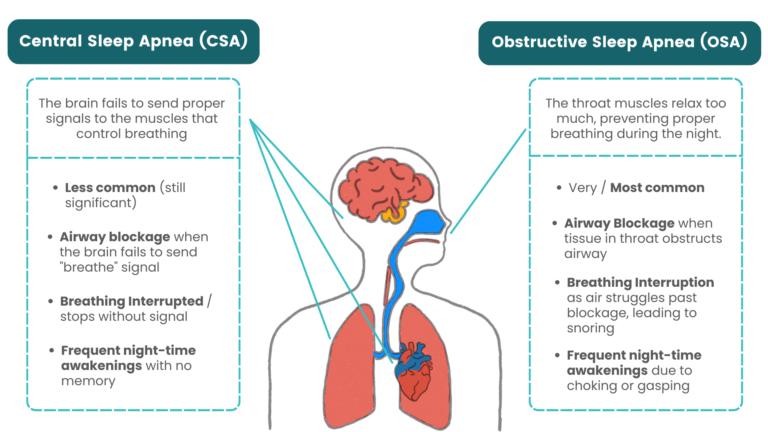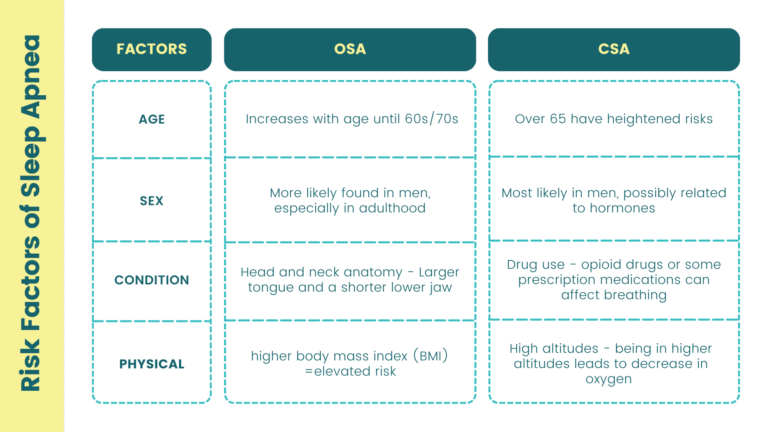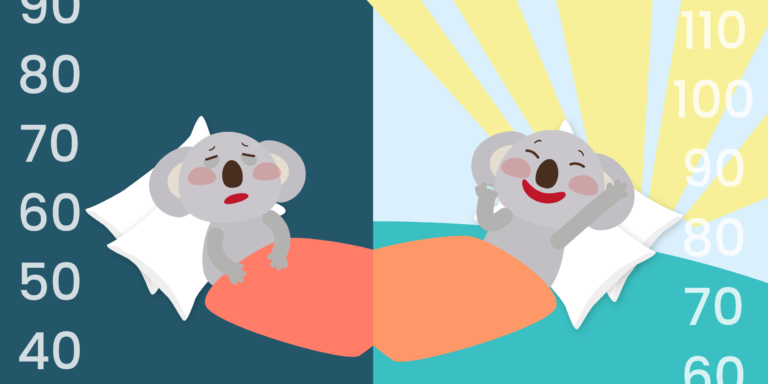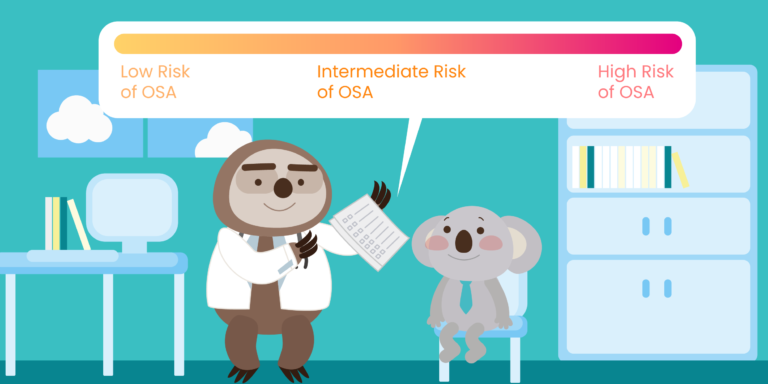Sleep apnea is a serious disorder in which breathing can rapidly stop and restart while a person is sleeping, leaving them feeling tired upon waking up. This condition impacts more than 936 million people worldwide. Despite being one of the most common sleep disorders, more than 80% of patients suffering from the condition are undiagnosed.
What are the Types of Sleep Apnea
There are three types of sleep apnea – obstructive (OSA), central (CSA), and mixed. Of the three sleep apnea types, OSA and CSA are the most common. It is also important to note that both OSA and CSA can have serious health implications, especially if left untreated.
Obstructive Sleep Apnea (OSA)
Obstructive sleep apnea (OSA) is the most prevalent type of sleep apnea, and it occurs when the throat muscles relax too much and are unable to keep the airway open, preventing the person from breathing normally at night. The frequency and duration of this disruption can vary greatly, and it can severely damage sleep quality. During an apneic event, the brain wakes up partially to signal the body to breathe properly again, disrupting the sleep pattern and preventing deep, restful sleep. People who suffer from OSA will often report feeling tired during the daytime, despite seemingly benefiting from a full night’s sleep.
Central Sleep Apnea (CSA)
Central sleep apnea is a condition where the brain fails to send proper signals to the muscles that control breathing, unlike obstructive sleep apnea, which is more common and occurs when throat muscles relax and block the airway. Central sleep apnea can be caused by heart failure, stroke, or high altitude sleeping. Treatments may involve managing conditions, using assistive devices, or supplemental oxygen.

Symptoms and Signs You Have Sleep Apnea
It can be challenging to distinguish between obstructive and central sleep apnea because their symptoms often overlap. You can tell you have central or obstructive sleep apnea when you experience the following:
- Loud snoring
- Excessive Daytime Sleepiness (EDS)
- Difficulty concentrating or memory loss
- Mental health effects – depression, anxiety, and increased irritability
- Physical Traits – larger neck sizes, smaller jaws and airways, chin position, tongue thickness
- Chronic morning headaches and morning soreness
- Waking up with a dry mouth or hoarse voice
- Excessive nighttime sweating
Causes and Risk Factors of Sleep Apnea
Sleep apnea causes include:
Causes of Obstructive Sleep Apnea (OSA)
Muscle Relaxation: During sleep, the muscles in the back of the throat relax, reducing the space for air to pass through.
Causes of Central Sleep Apnea (CSA)
Brain-Muscle Communication: CSA is caused by problems in how the brain communicates with the muscles responsible for breathing.
Brain Stem Dysfunction: For people with CSA, the brain stem may fail to properly recognize carbon dioxide levels in the body during sleep, leading to episodes of slower and shallower breathing.
Risk Factors of Sleep Apnea
A person’s likelihood of developing sleep apnea is influenced by a variety of factors. For OSA, age, sex, body weight, and specific anatomical traits of the head and neck area are the main risk factors. For CSA, other medical conditions, such as heart failure, stroke, or kidney failure, are common causes.

Dangers of Sleep Apnea
Sleep apnea poses dangers related to sleep deprivation, personal and professional life, and severe health implications, particularly concerning cardiovascular health, diabetes, and dementia. The dangers of sleep apnea include:
- Severe sleep deprivation leading to increased risk of accidents or injuries
- Difficulty concentrating
- Memory loss
- Behavioral changes
- Impact on personal and professional life
- Health implications associated with cardiovascular diseases, diabetes, and dementia.
Diagnosis and Treatment of Sleep Apnea
Diagnosis involves symptom evaluation, referrals to sleep disorder centers, and tests like nocturnal polysomnography or home sleep tests. Treatment options for OSA include lifestyle changes, nasal allergy treatment, CPAP, oral appliances, and various surgical options. The treatment for CSA often revolves around managing underlying conditions and may include supplemental oxygen or adaptive servo-ventilation (ASV).
Living with Sleep Apnea
Living with sleep apnea can be challenging. Most people with OSA don’t have issues breathing when awake, but have narrowed throats while sleeping. OSA can lead to hypertension, heart disease, and stroke if left untreated. Proper diagnosis and treatment are essential to lessen the effects on patients and their loved ones.
Sleep Apnea Long-Term Effects
The long-term effects and complications of OSA include:
- Daytime fatigue
- High blood pressure
- Type 2 diabetes
- Metabolic syndrome
- Complications with medications and surgery
- Liver problems
- Sleep-deprived partners
Proper diagnosis and treatment are vital to mitigate these long-term consequences.







